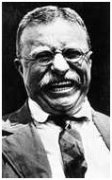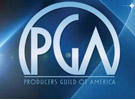
Pringles
USinfo | 2012-12-18 16:15

Pringles crisps
Pringles is a brand of potato- and wheat-based snacks owned by the Kellogg Company. Pringles are sold in more than 140 countries and have yearly sales of more than US$1.4 billion. They were originally developed by Procter & Gamble, who first sold the product in 1968. P&G sold the brand to Kellogg in 2012.
Beginnings
Pringles brand potato crisps were first sold in the United States in October 1968, and distributed internationally by 1975. The original Pringles television commercials were written, produced and directed by Thomas Scott Cadden (composer of the original Mr. Clean jingle) in 1968, while working at Tatham-Laird and Kudner Advertising Agency in Chicago.
There are several theories behind the origin of the name "Pringles". One theory refers to Mark Pringle, who filed a US Patent 2,286,644 titled "Method and Apparatus for Processing Potatoes" on March 5, 1937. Mr. Pringle's work was cited by Procter & Gamble (P&G) in filing their own patent for improving the taste of dehydrated processed potatoes. Another theory suggested two Procter advertising employees lived on Pringle Drive in Finneytown (north of Cincinnati, Ohio), and the name paired well with potato.Another reference says that P&G chose the Pringles name from a Cincinnati telephone book.
Development
P&G wanted to create a perfect crisp to address consumer complaints about broken, greasy, and stale chips, as well as air in the bags. The task was assigned to chemist Fredric Baur, who, from 1956 to 1958, created Pringles’ saddle shape from fried dough, and the can to go with it. Baur could not figure out how to make the chips taste good, though, and he eventually was pulled off the Pringles job to work on another brand. In the mid-1960s, another P&G researcher, Alexander Liepa of Montgomery, Ohio, restarted Baur’s work, and set out to improve on the Pringles taste, which he succeeded in doing. While Baur was the true inventor of the Pringles crisp, according to the patent, Liepa was the inventor of Pringles.Gene Wolfe, a mechanical engineer-author known for science fiction and fantasy novels, developed the machine that cooks them. Their consistent saddle shape is mathematically known as a hyperbolic paraboloid. Their design is reportedly aided by supercomputers to ensure safe aerodynamics while packaging.
Pringles have only about 42% potato content, the remainder being wheat starch and flours (potato, corn, and rice) mixed with vegetable oils and an emulsifier. Contrary to a popular misconception, Pringles crisps are fried, not baked.
They were originally known as "Pringles Newfangled Potato Chips", but other snack manufacturers objected, saying Pringles failed to meet the definition of a potato "chip". The US Food and Drug Administration weighed in on the matter, and in 1975, they ruled Pringles could only use the word "chip" in their product name within the following phrase: "potato chips made from dried potatoes". Faced with such an unpalatable appellation, Pringles eventually opted to rename their product potato "crisps" instead of chips. However, this later led to other issues in the United Kingdom, where the term potato "crisps" refers to the product Americans call potato "chips".
Purchase by Kellogg
In April 2011, P&G agreed to the $2.35 billion sale of the brand to Diamond Foods of California, a deal which would have more than tripled the size of Diamond's snack business. However, the deal fell through in February 2012 after a year-long delay due to issues over Diamond's accounts. On May 31, 2012, Kellogg Company officially acquired Pringles for $2.695 billion as part of a plan to grow its international snacks business. The acquisition of Pringles makes Kellogg the second-largest savory snacks company in the world.

Marketing
Pringles is advertised in the United States, the United Kingdom, Canada, Australia, and the Republic of Ireland with the slogan "Once you pop, the fun don't stop" along with the original slogan "Once you pop, you can't stop".
Throughout its history, Pringles used its advertising campaigns to compare their products to bagged chips. In its early years, they were marketed as "Newfangled Potato Chips" and had a small silver pop top to open the can. Unlike the current advertising, they only mentioned how their chips were unbroken as well as their curved shape, which allows them to be stacked, hence the slogan, "Other potato chips just don't stack up."
By the 1980s, the company launched the "Pringle Jingle", whose lyrics were "Once you taste the flavor ("It's a deep-fried taste!"), then you get the fever ("With a crispy crunch!"), then you've got the fever for the flavor of a Pringle!"
Starting in the 1990s and continuing today, Pringles has advertised their products by comparing them to bagged chips, which they view as greasy and broken. In each ad, a group of people are enjoying Pringles, while another person (usually alone) is enjoying a bag of unnamed potato chips that resembles either Lay's or Ruffles. They dump out some broken chips, only to find they're greasy, and end up wiping the grease all over their clothing.
Pringles, as a product brand, is especially known for its packaging, a tubular paperboard can with a foil-lined interior and a resealable plastic lid, which was invented by Fredric J. Baur. Baur (1918-2008) was an organic chemist and food storage technician who specialized in research and development and quality control for Cincinnati-based P&G. Baur's children honored his request to bury him in one of the cans by placing part of his cremated remains in a Pringles container in his grave.
The Pringles logo is a stylized cartoon caricature of the head of a male figure (commonly known as "Julius Pringles") designed by Louis R. Dixon, with a large mustache and parted bangs (until 2001, the character had eyebrows and his bow tie framed the product name). The crisps are made to a uniform size, so that they can be stacked very neatly within the container, rather than being packaged loosely in a bag. The cans come in 23g, 40g, 50g, 80g, 100, 110, 145, 150, 155, 160, 163, 165, 170, 175, 181, 182, 190 (party size), 200, and 230 gram sizes.
Variations
Pringles come in many flavors. Standard flavors include original, salt and vinegar, sour cream and onion, cheddar cheese, ranch dressing, barbecue and loaded baked potato. Some flavors were distributed only to limited market areas. For example, prawn cocktail, spicy cheese, wasabi, smokey bacon, and curry flavors have been available in the United Kingdom.
Occasionally P&G produced limited edition runs. Seasonal flavors, past and present, include ketchup, zesty lime and chili, chili cheese dog, "pizzalicious", paprika, Texas BBQ sauce, buffalo wing, and cajun. A "low-fat" variety was also sold. Examples of limited edition flavors include jalapeno, honey mustard, cheesy fries, onion blossom, mozzarella cheese stick, screamin' dill pickle, and Mexican layered dip. At one point in the early 1990s, "Corn Pringles" were available. The canister was black and had cartoon images of corn, as well as the normal packaging standards. The crisps were made of corn and resembled a corn chip in flavor and texture.
Pringles also produces several "multi-grain" varieties which have some of their base starch ingredients replaced with corn flour, barley flour, wheat bran and black beans. To address consumer interest in healthier ingredients, Pringles experimented in the late '80s with bringing brand extensions to market that included vegetables such as broccoli, tomatoes, and carrots in the potato dough, but the market was thought too small.
Pringles has offered specialized flavors in various parts of the world, such as mozzarella stick with marinara in North America and jalapeño in Latin America.
Five new flavors were introduced in Asia, namely: soft-shelled crab; grilled shrimp; seaweed; blueberry and hazelnut; and lemon and sesame. The grilled shrimp chips are pink in color, while seaweed is colored green.
Two limited market flavors, cheeseburger and "Taco Night", were recalled in March 2010 as a safety precaution after Salmonella was found in a Basic Food Flavors plant which produces the flavor-enhancing hydrolyzed vegetable protein used in those flavors.
Share this page



















